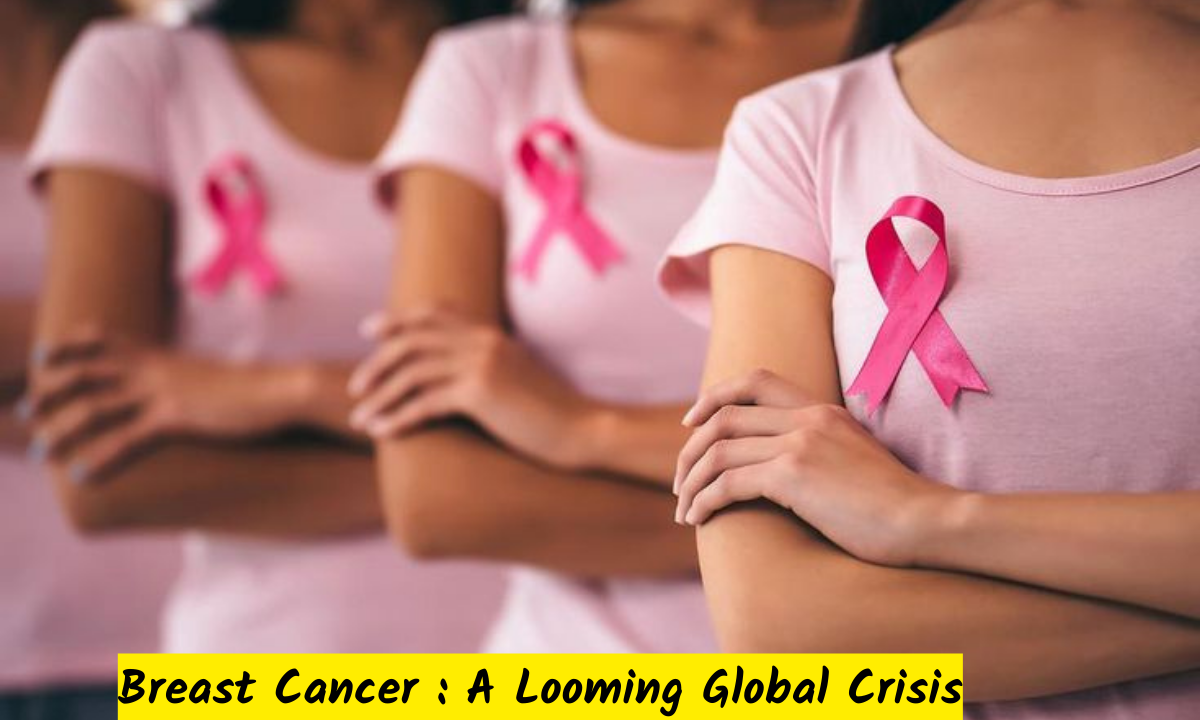Introduction
- What is breast cancer?
- Why is breast cancer a significant health concern?
Risk Factors
- Genetic factors
- Lifestyle factors
- Environmental factors
Signs and Symptoms
- Lump or mass in the breast
- Changes in breast size or shape
- Nipple changes
- Breast pain
Diagnosis
- Breast self-exam
- Mammography
- Biopsy
Treatment Options
- Surgery
- Radiation therapy
- Chemotherapy
- Hormonal therapy
- Targeted therapy
Coping and Support
- Emotional impact of breast cancer
- Support groups
- Counseling
Prevention
- Healthy lifestyle choices
- Regular screenings
- Genetic testing
Advances in Research
- Targeted therapies
- Immunotherapy
- Personalized medicine
Conclusion
- Summary of key points
FAQs
- Can men get breast cancer?
- What is the survival rate for breast cancer?
- Is breast cancer hereditary?
- Can breast cancer be prevented?
- How often should women perform breast self-exams?
Breast cancer, a formidable adversary in the realm of public health, continues to cast a long shadow over millions of lives worldwide. The Lancet Commission’s latest predictions, which predict an astounding one million deaths yearly by 2040, portray a bleak picture .This ominous trajectory underscores the urgent need for heightened awareness, proactive measures, and concerted efforts across the spectrum of healthcare, research, and policy.
Factors Driving the Escalation(Breast cancer)
Several interrelated factors contribute to the anticipated surge in breast cancer mortality rates. These include demographic shifts, lifestyle changes, socioeconomic disparities, and evolving patterns of healthcare access and utilization. The field of breast cancer epidemiology is further complicated by the introduction of new risk variables, such as dietary practices, genetic predispositions, and environmental contaminants. A comprehensive and multidisciplinary approach that incorporates both preventive efforts and treatment improvements is necessary to address these complex causes.
Implications for Global Health Policy
The estimates made by the Lancet Commission have significant ramifications for stakeholders, governments, and healthcare professionals in general. In light of the impending crisis, governments must prioritize the allocation of resources towards cancer screening, early detection initiatives, and access to affordable treatment modalities. Furthermore, investments in research infrastructure, clinical trials, and precision medicine hold the key to unlocking breakthroughs in breast cancer management and care. Collaboration between public and private sectors, along with international partnerships, is indispensable in fostering innovation and driving progress towards eliminating health disparities.
Empowering Patients Through Education and Advocacy
Empowering patients with knowledge, resources, and support networks constitutes a cornerstone of effective breast cancer control. Educational campaigns, outreach programs, and community engagement initiatives play a pivotal role in raising awareness about risk factors, symptom recognition, and screening guidelines. Additionally, advocacy efforts aimed at destigmatizing breast cancer, promoting early intervention, and ?Building a culture of compassionate care is essential to helping impacted communities become resilient and united.
Harnessing Technology for Precision Oncology
In the era of precision oncology, technological innovations hold immense promise for revolutionizing breast cancer diagnosis and treatment. A paradigm shift towards customized, patient-centered interventions is occurring in the landscape of cancer care, encompassing everything from targeted medications and immunotherapeutic methods to molecular imaging and genetic analysis. By utilizing telemedicine platforms, big data analytics, and artificial intelligence, healthcare practitioners can improve clinical results, personalize treatment plans, and improve the quality of life for those who have survived breast cancer.
Conclusion: A Call to Action
The Lancet Commission’s sobering projections serve as a wake-up call for the global community to redouble its efforts in combating the scourge of breast cancer. As we stand on the cusp of a new decade, the imperative to prioritize prevention, expand access to care, and accelerate research has never been more pressing. By fostering collaboration, innovation, and solidarity, we can confront this formidable challenge head-on and strive towards a future where breast cancer no longer exacts a toll on millions of lives worldwide.
FAQs
- Can men get breast cancer ? Yes, although rare, men can develop breast cancer.
- What is the survival rate for breast cancer ? Survival rates vary depending on factors such as the stage of cancer and treatment received. However, survival rates have increased dramatically due to early detection and treatment advancements.
- Is breast cancer hereditary? While some cases of breast cancer are hereditary due to genetic mutations, the majority occur sporadically without a family history.
- Can breast cancer be prevented?A healthy lifestyle, frequent checkups, and in certain situations, genetic testing can help lower the risk of breast cancer, even though it cannot be prevented in every instance.
- How often should women perform breast self-exams ? Women are encouraged to perform breast self-exams monthly and report any changes or abnormalities to
- What is breast cancer? One kind of cancer that arises in the breast cells is called breast cancer. It can occur in both men and women, although it is much more common in women.
- What causes breast cancer? The exact causes of breast cancer are not fully understood, but it is believed to be a combination of genetic, environmental, and lifestyle factors. Mutations in certain genes, such as BRCA1 and BRCA2, can increase the risk of developing breast cancer. Other factors, such as exposure to radiation, hormonal influences, and lifestyle choices like diet and exercise, can also play a role.
- What are the symptoms of breast cancer? Common symptoms of breast cancer include:
a growth or bump in the underarm or breast region
Changes in breast size or shape
Nipple abnormalities, such as inversion or discharge
Skin changes, such as redness or dimpling - How is breast cancer diagnosed? Breast cancer can be diagnosed through various methods, including physical exams, imaging tests (such as mammograms and ultrasounds), and biopsy (removing a small sample of tissue for examination under a microscope).
- What are the treatment options for breast cancer? Treatment for breast cancer depends on factors such as the stage of the disease, the presence of specific genetic mutations, and the individual’s overall health. Treatment options may include surgery (lumpectomy or mastectomy), chemotherapy, radiation therapy, hormonal therapy, and targeted therapy.
- Is breast cancer preventable? While it may not be entirely preventable, there are steps individuals can take to reduce their risk of developing breast cancer. These include maintaining a healthy lifestyle, avoiding excessive alcohol consumption, staying physically active, and attending regular screenings for early detection.
- What is the prognosis for breast cancer? The prognosis for breast cancer varies depending on factors such as the stage of the disease, the type of breast cancer, and the individual’s response to treatment. With early detection and appropriate treatment, many individuals with breast cancer can achieve favorable outcomes and long-term survival.
- How can I support someone with breast cancer? Supporting someone with breast cancer can involve offering emotional support, helping with practical tasks, accompanying them to medical appointments, and educating yourself about the disease. Listening to their needs and being there for them throughout their journey can make a significant difference.
- Which four stages of breast cancer are there?
T1: Tumor is 2 cm (3/4 of an inch) or smaller in diameter. It comprises T1a, T1b, and T1c. T2: The tumor is more than 2 cm in diameter, but not more than 5 cm (2 inches). T3: The size of the tumor exceeds 5 cm. T4: Tumor of any size that is developing into the skin or chest wall. This category comprises T4a, T4b, T4c, and T4d.



